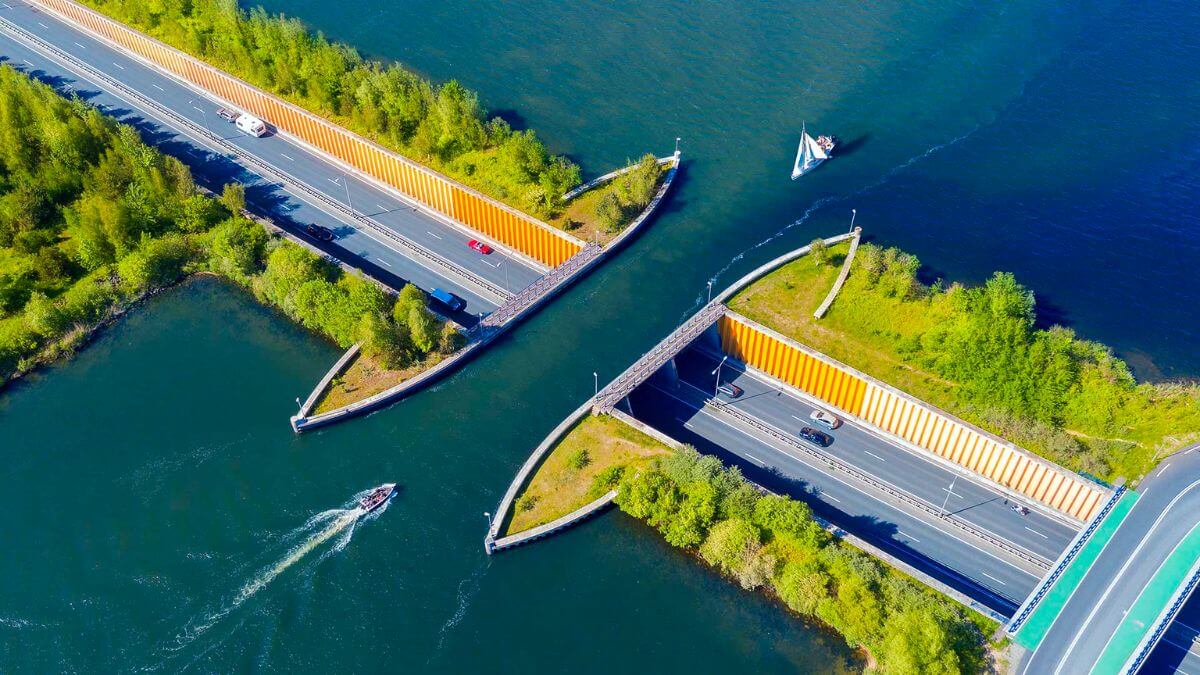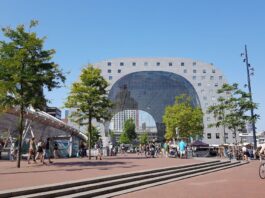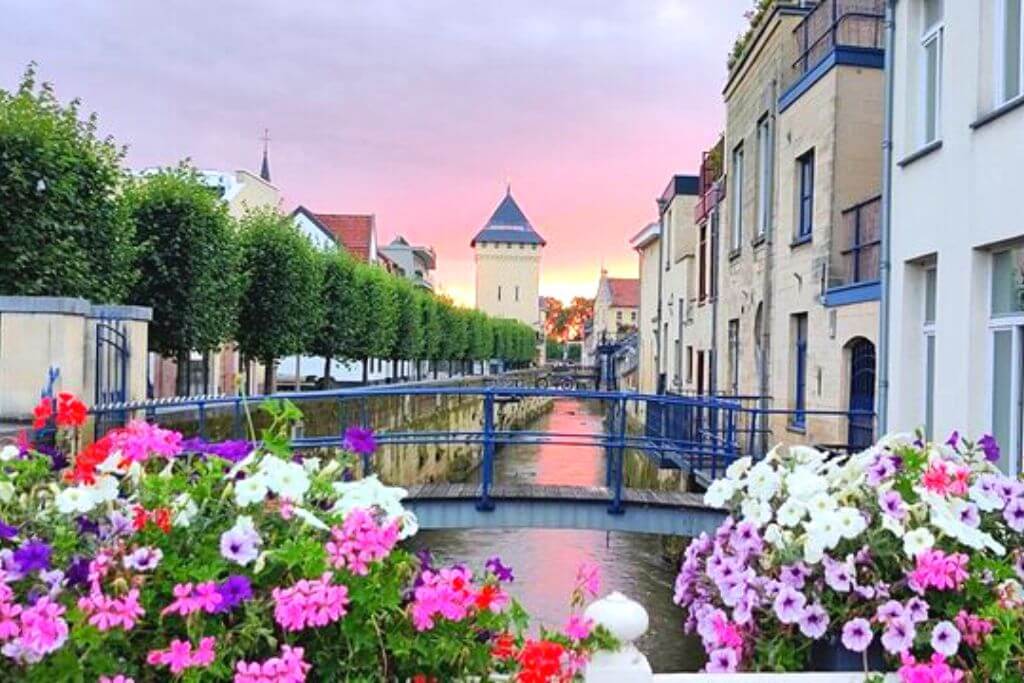The Veluwemeer Aqueduct, which opened in 2002, is a spectacular piece of architecture and engineering. Engineers chose a different technique than other alternatives for permitting vehicular and aquatic traffic to travel over or beneath one another: a water bridge.
The aqueduct is located across the N302 road and is part of a lake of the same name. The road itself is fascinating, linking the mainland Netherlands to Flevoland, the world’s largest manmade island.
Flevoland was built on reclaimed land in the region and is encircled by three artificial lakes. This island is actually divided into two drained pieces, Flevopolder and Noordoostpolder, which combine to form the province of Flevoland, which covers 374.5 square miles (970 square kilometers).
Engineers chose to build the waterway across the N302 road, which is used by around 28,000 vehicles each day, during the design of the unusual bridge structure.
How does the Veluwemeer Aqueduct function?
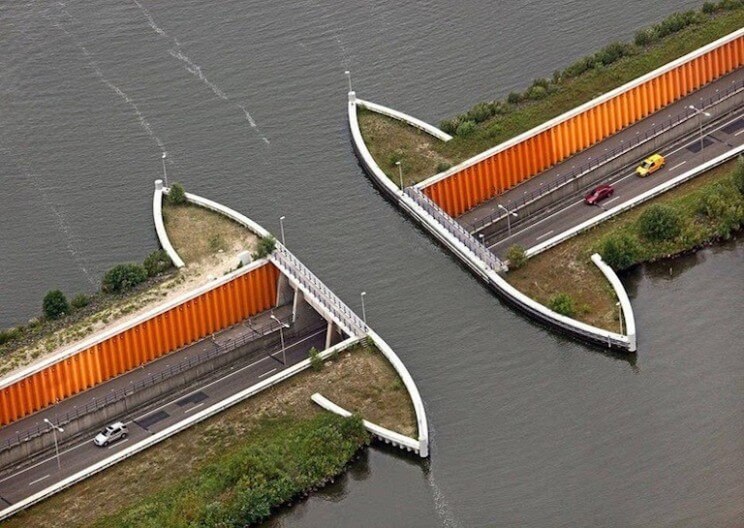
The Veluwemeer Aqueduct is a shallow 9.83-foot (3-meter) deep water bridge that allows small boats and other shallow-draft water vehicles to cross securely and quickly over the road.
Aside from allowing boats to travel over the road, pedestrian walkways may be found on both sides, allowing foot traffic to cross as well. The route itself has designated cycle lanes.
Unlike drawbridges or other roadway structures, the water bridge design allows for continuous traffic flow on the road and over the aqueduct.
The N302 road across the lake is raised above the waterline for most of its span by a series of artificial barriers, but during the short, 55.7 feet (17 m) passage on the aqueduct, the road plunges quickly into the lake’s surface.
Surprisingly, the N302 crosses the lake on a more traditional bridge structure around 1,3212 feet (400 m) NW of the aqueduct.
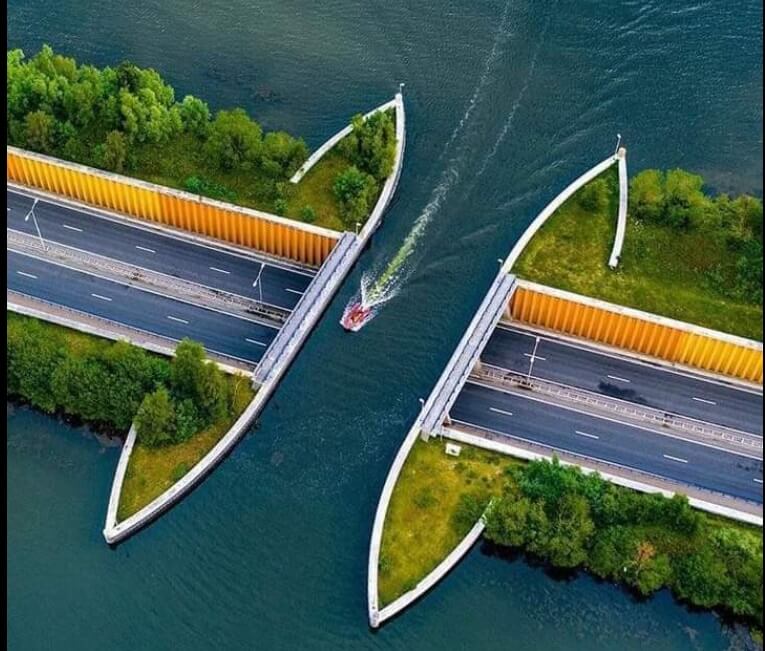
Veluwemeer Lake (ps. “meer” is Dutch for lake) is one of fourteen ‘bordering lakes’ in the area, all of which are essentially just a very long continuous body of water caused by not entirely linking Flevoland and the Northeast Polder to the mainland of the Netherlands.
Originally, the lake system was built to help regulate water levels and the groundwater table in the surrounding areas. The lakes are now important ecological reserves (particularly for aquatic birds) and leisure sites for local inhabitants.
The aqueduct is called after the lake it serves, and the lake is named after the Veluwe region of Gelderland, which is located just south of the lake.
The Veluwemeer Aqueduct was built with 776,922 cubic feet (22,000 cubic meters) of concrete and steel sheet piling to support the weight of the water above the roadway while also preventing sediment from leaking onto the road.
Why was the Veluwemeer Aqueduct constructed?
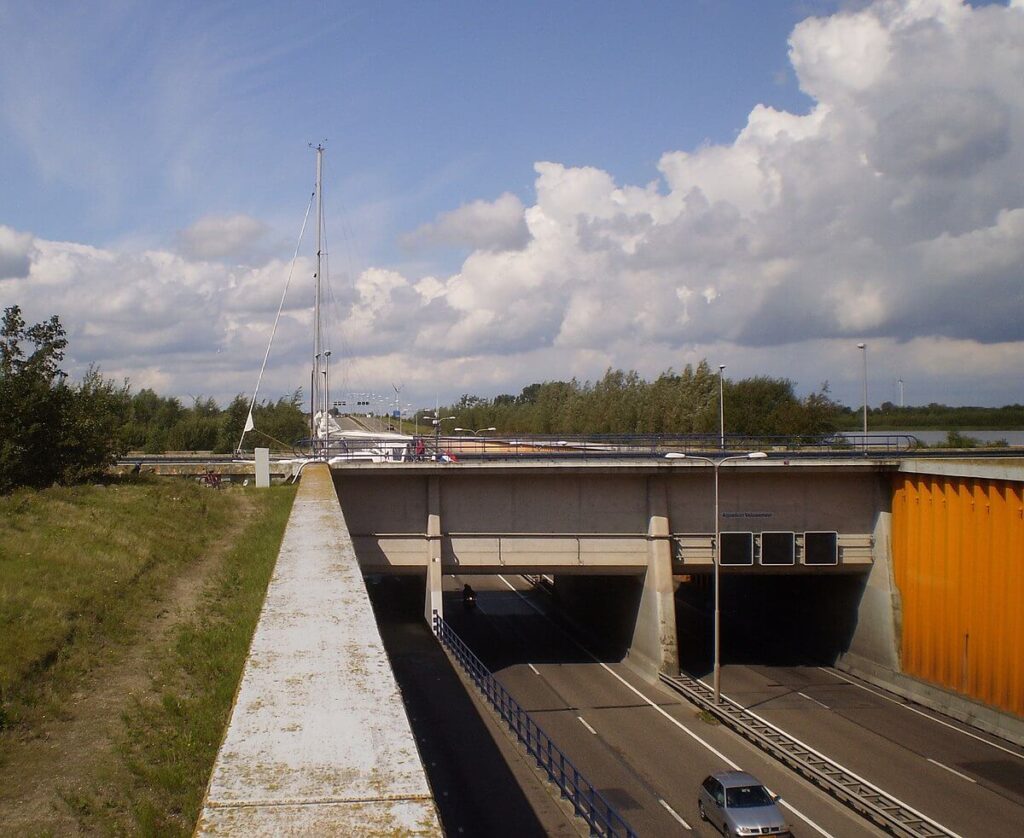
During the project’s development phase, drawbridges, ferries, and tunnels were examined as possible alternatives for allowing the road to traverse the lake entirely. However, these were rejected, and the unusual approach of constructing a brief aqueduct over the road was chosen.
Because the N302 is a major route, utilizing a drawbridge or ferry option to halt traffic flow was judged unfeasible and inefficient. A tunnel, which was also likely explored, would have taken far too long and cost far too much money in comparison to the aqueduct alternative that was eventually chosen.
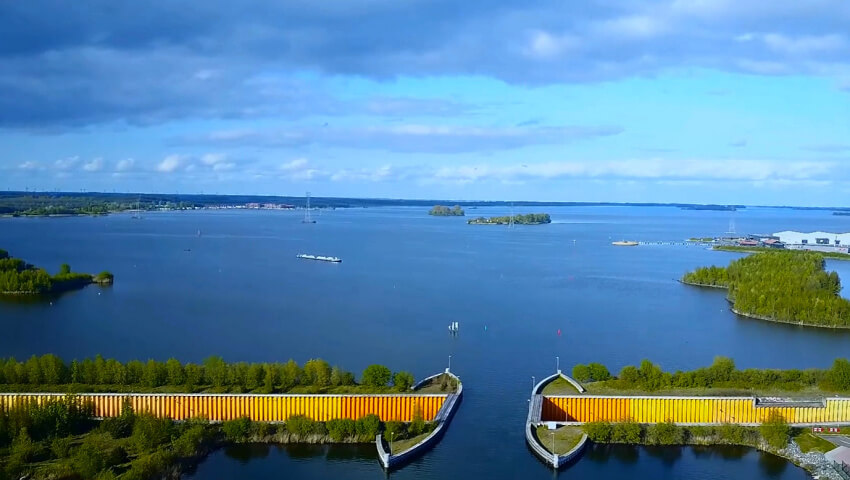
A bridge, albeit a more conventional answer to the problem, was regarded far too expensive in comparison to the more acceptable cost of the aqueduct option, which was estimated to be roughly $61 million. Given that the place at which it was to be built did not require wide water traffic, the narrow aqueduct design was also judged prudent.
While this structure does not break any records, it is one of the world’s shortest aqueducts. Not to mention one of the most intriguing in the world.
If you happen to be in the vicinity, it could be worth your time to go check it out for yourself.
